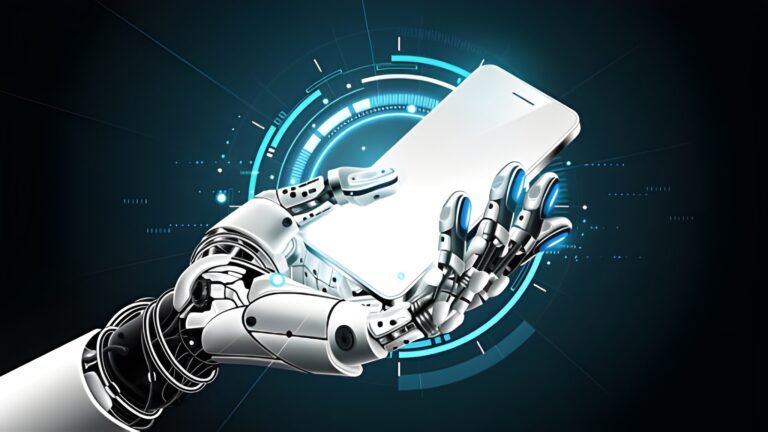In the contemporary landscape of innovation, artificial intelligence has emerged not just as a component of digital transformation but as its defining axis. As the digital era deepens, AI Software Development becomes a field of paramount importance, influencing not just how software is created, but how it evolves, adapts, and interacts with human beings. The integration of AI into software systems reflects a shift from static instruction-based architecture to intelligent, adaptive, and context-aware environments.
This theoretical discourse explores the dynamic nature of AI-powered software creation, its present contours, emerging trends, and the inevitable future that beckons. The transformation is not merely technical but also philosophical, reshaping our understanding of agency, automation, and interaction.
1. Historical Foundations of AI Integration in Software Development
The roots of AI in software development can be traced back to the early concepts of symbolic logic and expert systems in the mid-twentieth century. The foundational theories around knowledge representation, inference engines, and problem-solving laid the groundwork for computational models that could exhibit intelligent behavior.
By the 1980s and 1990s, AI tools began surfacing in specific domains such as medical diagnostics, financial forecasting, and robotic control. These tools were rule-based and heavily dependent on human-programmed logic. The limitation of scalability and adaptability soon became evident.
The paradigm shift began with the advent of machine learning and neural networks. These systems no longer required explicit instructions for every decision; they learned from data. With the convergence of big data, high-performance computing, and open-source frameworks, AI systems began to demonstrate exceptional results in perception-based tasks such as image recognition, natural language processing, and recommendation systems.
2. The Modern Landscape of AI in Software Development
Today, software engineering is no longer confined to traditional development lifecycles. AI-driven systems are integrated throughout the pipeline from design and development to deployment, testing, and maintenance. The shift from deterministic logic to probabilistic reasoning represents a profound conceptual transformation.
A key trend has been the evolution from automation to autonomy. Earlier systems automated repetitive tasks; modern systems aim to make independent decisions in complex environments. Software applications now exhibit characteristics once deemed purely human: learning, reasoning, and even creativity.
For developers, this evolution means adopting frameworks, libraries, and platforms that accommodate models of cognition, language understanding, pattern detection, and decision-making. Tools such as TensorFlow, PyTorch, and Hugging Face now form part of the standard AI development toolkit. Development methodologies are increasingly guided by data-centric workflows rather than code-centric ones.
3. Agentic Intelligence and Emergent Capabilities
Perhaps the most exciting frontier is agentic ai development. Unlike traditional programs, agentic systems operate with goals, subgoals, and context-sensitive strategies. They exhibit behaviors that resemble autonomous reasoning and planning.
These intelligent agents are now being embedded in both virtual and physical environments. From AI-powered personal assistants to autonomous vehicles and adaptive robotics, the role of software agents is expanding. They function with an awareness of objectives, constraints, and consequences. Importantly, these agents are not hardcoded with fixed instructions; they evolve through interaction and feedback.
The theory behind agentic systems blends symbolic AI with sub-symbolic learning approaches, forming hybrid architectures. Reinforcement learning, attention mechanisms, and hierarchical planning models form the backbone of such systems. The development and management of these agents require an understanding of complex dynamic systems, cognitive modeling, and distributed intelligence.
4. AI-Enhanced Software Development Processes
The software development lifecycle itself has been deeply influenced by AI technologies. AI is now used in:
-
Code generation and completion using natural language prompts
-
Intelligent testing and bug detection using pattern recognition
-
Project management through predictive analytics
-
Version control conflict resolution using learning models
-
User interface adaptation using behavioral modeling
Generative models can create boilerplate code, identify refactoring opportunities, and even suggest optimal architectural designs. This transformation is reducing the cognitive load on developers while enhancing productivity and accuracy.
Advanced integrated development environments (IDEs) now come equipped with AI-based assistants capable of understanding code context, suggesting improvements, and predicting errors. These assistants are not only reactive but increasingly proactive, nudging developers toward best practices.
5. Human-AI Collaboration in Software Creation
A critical theoretical implication of AI-led development is the nature of human-AI collaboration. Unlike automation, which replaces human effort, AI in software development augments human intelligence. It facilitates creativity, reduces redundant work, and supports exploratory design.
Human developers are transitioning into roles where their core responsibilities include strategic thinking, ethical oversight, and problem framing, while AI handles the execution of low-level tasks. This symbiosis is reshaping team dynamics, role definitions, and the skills required in software engineering.
The relationship between developer and machine is no longer transactional; it is conversational. Through natural language processing, developers can communicate with code-generation models, modify behavior dynamically, and iteratively refine outputs. The line between programming and dialogue is becoming increasingly blurred.
6. The Role of AI Consulting in Enterprise Integration
As organizations grapple with the complexity of integrating AI into their software products and services, the need for AI consulting services becomes evident. These services go beyond technical implementation. They encompass strategic planning, regulatory compliance, data readiness assessments, model validation, and change management.
Enterprises must navigate a range of challenges: legacy system integration, algorithmic bias, data governance, and the cultural shift required to adopt AI-powered processes. Consulting firms offer a bridge between emerging technologies and business objectives. Their role is not merely advisory but transformational.
Through workshops, feasibility studies, and pilot projects, consulting professionals help organizations align their operational models with AI-enabled strategies. The goal is not just digital transformation but intelligent transformation systems that learn, adapt, and improve continuously.
7. Intelligent Interfaces and Conversational Systems
One of the most visible manifestations of AI in software today is in the realm of conversational systems. AI chatbot development has emerged as a critical domain, influencing customer service, healthcare, education, and enterprise communication.
Chatbots and virtual agents leverage natural language understanding, dialogue management, and sentiment analysis to deliver seamless interactions. The shift is from transactional interfaces to contextual, empathetic, and adaptive conversations.
Modern chatbots are no longer rule-bound scripts. They use transformers and generative models to construct human-like dialogue. These systems are capable of remembering previous interactions, handling ambiguity, and navigating multi-turn conversations.
From a theoretical perspective, chatbots represent a convergence of linguistics, psychology, and computation. Designing effective conversational agents requires not only technical expertise but also an understanding of human behavior, cultural context, and emotional intelligence.
8. The Democratization of AI Development
One of the significant trends shaping the future is the democratization of ai development. Open-source platforms, low-code environments, and pre-trained models have made AI accessible to non-experts. This inclusivity is fostering innovation across sectors and geographies.
Developers, data scientists, domain experts, and even students can now build intelligent applications without deep knowledge of the underlying algorithms. This phenomenon is enabling rapid prototyping, iterative experimentation, and user-driven design.
However, democratization also brings challenges: the proliferation of unverified models, security risks, and ethical considerations. As development becomes more decentralized, the emphasis must shift to governance, transparency, and education.
The theory of democratized AI posits that intelligence should not be a centralized resource but a distributed capability. It suggests that human creativity, empowered by AI tools, can solve local and global problems more effectively.
9. Ethical and Philosophical Considerations
As AI software becomes more pervasive and powerful, ethical questions become unavoidable. Issues around data privacy, algorithmic bias, and unintended consequences demand serious attention.
One of the central concerns is agency. Who is responsible for the actions of an autonomous system? How do we assign accountability in complex AI-mediated interactions? These questions are not merely legal but philosophical.
There is also the matter of transparency. As AI systems become more complex, their decision-making processes often become opaque. This “black box” phenomenon challenges our ability to audit, trust, and understand intelligent software.
The development of AI software must therefore be accompanied by frameworks for ethical reasoning, impact analysis, and stakeholder engagement. This includes incorporating explainability, fairness, and safety into the design process from the outset.
10. Future Directions and Theoretical Horizons
Looking ahead, the trajectory of AI Software Development is pointing toward greater convergence. Fields such as quantum computing, brain-computer interfaces, and artificial general intelligence are beginning to intersect with software engineering.
We are likely to see the emergence of self-coding systems AI that writes and improves other AI. Software will not just be a product but a participant in its own evolution.
Another direction is embodied intelligence software embedded within physical entities such as robots, drones, and wearables. These systems will interact with the physical world in real time, requiring advances in sensor fusion, real-world modeling, and adaptive control.
The theory of software as a living system capable of adaptation, evolution, and interdependence is gradually becoming reality. Software is moving from being a static artifact to a dynamic ecosystem.
Conclusion
The future of software development is undeniably intelligent. With the integration of AI, the very definition of software is changing from deterministic tools to adaptive, learning systems. This transformation is not merely technological but conceptual, affecting how we think about design, interaction, and cognition.
Through AI Software Development, we are entering an era where machines not only execute commands but also understand context, learn from data, and collaborate with humans. With the rise of agentic ai development, the boundaries of autonomy and control are being redefined. Strategic partnerships powered by ai consulting services are shaping enterprise-level adoption, while ai chatbot development is humanizing digital interfaces. As more stakeholders embrace AI development, the collective capacity to innovate, adapt, and transform increases exponentially.
The trends discussed here are not ends in themselves but signposts of a larger shift. They invite us to rethink what it means to build, use, and live with intelligent systems. In this unfolding narrative, the challenge is not only to develop better software but to do so ethically, inclusively, and wisely.






